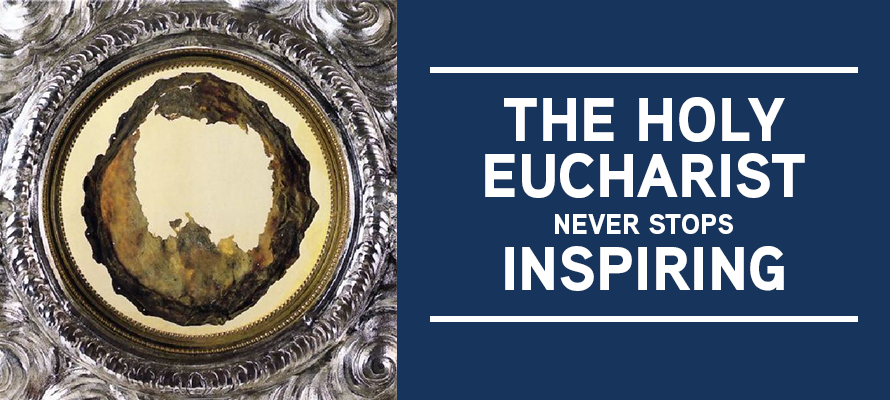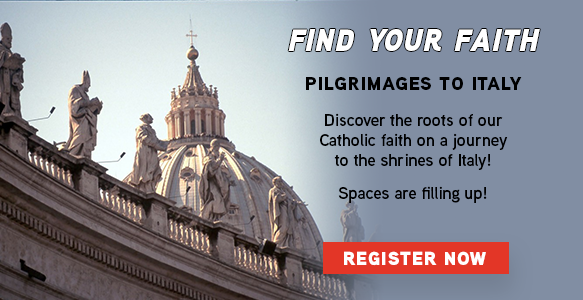
A Basilian monk, who had doubted the Real Presence of Our Lord in the Eucharist, was celebrating Mass, and at the consecration, saw that the Host had changed into flesh. The wine had changed into blood; clotting and coagulating into five clots of differing sizes. His doubt led to the first recorded Eucharistic Miracle, making the words of Romans 8:28 that “God works all things for our good” shine forth in splendor at Lanciano, Italy.
Today, you can still visit this miracle, seeing the Host that turned to flesh and wine that turned to blood held in an ornate and special reliquary that has never been hermetically sealed. It has stayed the same for more than 1,200 years without any change. Independent lab studies have shown that the flesh is real flesh and the blood is real blood that belong to a human heart. The flesh and blood have the same blood type – AB – according to documents on the website at the Church where this special miracle took place.
While the Eucharistic Miracle at Lanciano is the first recorded and most famous, there have been hundreds of others. It is another Eucharistic Miracle in Bolsena, near Orvieto, Italy in 1263 that led to the current Feast of Corpus Christi that we celebrate this year on June 23. This Eucharistic Miracle was also about a priest’s doubt in the Eucharistic presence. A German priest, Peter of Prague, was celebrating Mass above the tomb of St. Christina when blood began to seep from the consecrated Host and run over his hands onto the altar and corporal.
Pope Urban IV, who was nearby, ordered an investigation which revealed it was indeed human blood. Pope Urban ordered that the blood-stained corporal be brought to Orvieto where a procession was done to enshrine it in the Cathedral of Orvieto. The pope then commissioned St. Thomas Aquinas to compose a Mass honoring the Holy Eucharist as the Body of Christ and instituted the feast of Corpus Christi, which is a Holy Day of Obligation for Catholics (though often moved to the following Sunday).
To this day, pilgrims travel to St. Christina’s Church in Bolsena where the miracle first occurred. Entering the Chapel of the Miracle, the stains on the paved floor are from the blood that came from the corporal. The holy corporal itself is still kept in the Cathedral of Orvieto, drawing millions of Catholics, including popes and cardinals, to see this glorious manifestation of God’s grace. In August of 1964, the 700th anniversary of the institution of the Feast of Corpus Christi, Pope Paul VI celebrated Holy Mass at the altar where the holy corporal is kept in a golden shrine.
Today, millions of pilgrims still journey to the sites of Eucharistic Miracles, although each of us has the privilege to witness the miracle of the Eucharist every day in our own home parishes throughout the world.




